sodium metaborate, anhydrous
Modify Date: 2024-01-04 11:38:03

sodium metaborate, anhydrous structure
|
Common Name | sodium metaborate, anhydrous | ||
|---|---|---|---|---|
| CAS Number | 7775-19-1 | Molecular Weight | 65.80000 | |
| Density | 2.464 | Boiling Point | 1434ºC | |
| Molecular Formula | BNaO2 | Melting Point | 966ºC | |
| MSDS | N/A | Flash Point | N/A | |
| Name | sodium metaborate |
|---|---|
| Synonym | More Synonyms |
| Density | 2.464 |
|---|---|
| Boiling Point | 1434ºC |
| Melting Point | 966ºC |
| Molecular Formula | BNaO2 |
| Molecular Weight | 65.80000 |
| Exact Mass | 65.99000 |
| PSA | 40.13000 |
| Water Solubility | g/100g solution H2O: 14.10 (0°C), 22.00 (25°C), 55.60 (100°C); solid phase, NaBO2 ·4H2O (0°C, 25°C), NaBO2 · 2H2O (100°C) [KRU93] |
Synonym:None Section 2 - COMPOSITION, INFORMATION ON INGREDIENTS
Risk Phrases: None Listed. Section 3 - HAZARDS IDENTIFICATION EMERGENCY OVERVIEW
The toxicological properties of this material have not been fully investigated. Potential Health Effects Eye: May cause eye irritation. Skin: May cause skin irritation. Ingestion: The toxicological properties of this substance have not been fully investigated. Inhalation: May cause respiratory tract irritation. Chronic: No information found. Section 4 - FIRST AID MEASURES Eyes: Flush eyes with plenty of water for at least 15 minutes, occasionally lifting the upper and lower eyelids. Get medical aid. Skin: Flush skin with plenty of water for at least 15 minutes while removing contaminated clothing and shoes. Get medical aid if irritation develops or persists. Wash clothing before reuse. Ingestion: Never give anything by mouth to an unconscious person. Get medical aid. Wash mouth out with water. Inhalation: Remove from exposure and move to fresh air immediately. If not breathing, give artificial respiration. If breathing is difficult, give oxygen. Get medical aid if cough or other symptoms appear. Notes to Physician: Section 5 - FIRE FIGHTING MEASURES General Information: As in any fire, wear a self-contained breathing apparatus in pressure-demand, MSHA/NIOSH (approved or equivalent), and full protective gear. During a fire, irritating and highly toxic gases may be generated by thermal decomposition or combustion. Extinguishing Media: Use water spray, dry chemical, carbon dioxide, or chemical foam. Section 6 - ACCIDENTAL RELEASE MEASURES General Information: Use proper personal protective equipment as indicated in Section 8. Spills/Leaks: Vacuum or sweep up material and place into a suitable disposal container. Clean up spills immediately, observing precautions in the Protective Equipment section. Avoid generating dusty conditions. Provide ventilation. Section 7 - HANDLING and STORAGE Handling: Wash thoroughly after handling. Use with adequate ventilation. Minimize dust generation and accumulation. Avoid contact with eyes, skin, and clothing. Keep container tightly closed. Avoid breathing dust. Storage: Store in a tightly closed container. Store in a cool, dry, well-ventilated area away from incompatible substances. Section 8 - EXPOSURE CONTROLS, PERSONAL PROTECTION Engineering Controls: Facilities storing or utilizing this material should be equipped with an eyewash facility and a safety shower. Use adequate ventilation to keep airborne concentrations low. Exposure Limits CAS# 7775-19-1: CAS# 10555-76-7: Personal Protective Equipment Eyes: Wear appropriate protective eyeglasses or chemical safety goggles as described by OSHA's eye and face protection regulations in 29 CFR 1910.133 or European Standard EN166. Skin: Wear appropriate protective gloves to prevent skin exposure. Clothing: Wear appropriate protective clothing to prevent skin exposure. Respirators: Follow the OSHA respirator regulations found in 29 CFR 1910.134 or European Standard EN 149. Use a NIOSH/MSHA or European Standard EN 149 approved respirator if exposure limits are exceeded or if irritation or other symptoms are experienced. Section 9 - PHYSICAL AND CHEMICAL PROPERTIES Physical State: Powder Color: white granular Odor: Not available. pH: alkaline in water Vapor Pressure: Not available. Viscosity: Not available. Boiling Point: Not available. Freezing/Melting Point: 57 deg C Autoignition Temperature: Not available. Flash Point: Not available. Explosion Limits, lower: N/A Explosion Limits, upper: N/A Decomposition Temperature: Solubility in water: soluble Specific Gravity/Density: Molecular Formula: BNaO2.4H2O Molecular Weight: 137.86 Section 10 - STABILITY AND REACTIVITY Chemical Stability: Stable under normal temperatures and pressures. Conditions to Avoid: Dust generation. Incompatibilities with Other Materials: No significant incompatibilities identified with common materials and contaminants.. Hazardous Decomposition Products: No data available. Hazardous Polymerization: Has not been reported. Section 11 - TOXICOLOGICAL INFORMATION RTECS#: CAS# 7775-19-1: ED4640000 CAS# 10555-76-7 unlisted. LD50/LC50: CAS# 7775-19-1: Oral, rat: LD50 = 2330 mg/kg. CAS# 10555-76-7. Carcinogenicity: Sodium metaborate anhydrous - Not listed by ACGIH, IARC, or NTP. Sodium metaborate tetrahydrate - Not listed by ACGIH, IARC, or NTP. Other: See actual entry in RTECS for complete information. Section 12 - ECOLOGICAL INFORMATION Other No information available. Section 13 - DISPOSAL CONSIDERATIONS Dispose of in a manner consistent with federal, state, and local regulations. Section 14 - TRANSPORT INFORMATION IATA Shipping Name: Not regulated. Hazard Class: UN Number: Packing Group: IMO Shipping Name: Not regulated. Hazard Class: UN Number: Packing Group: RID/ADR Shipping Name: Not regulated. Hazard Class: UN Number: Packing group: Section 15 - REGULATORY INFORMATION European/International Regulations European Labeling in Accordance with EC Directives Hazard Symbols: Not available. Risk Phrases: Safety Phrases: S 24/25 Avoid contact with skin and eyes. WGK (Water Danger/Protection) CAS# 7775-19-1: 1 CAS# 10555-76-7: No information available. Canada CAS# 7775-19-1 is listed on Canada's DSL List. CAS# 7775-19-1 is not listed on Canada's Ingredient Disclosure List. CAS# 10555-76-7 is not listed on Canada's Ingredient Disclosure List. US FEDERAL TSCA CAS# 7775-19-1 is listed on the TSCA inventory. CAS# 10555-76-7 is not on the TSCA Inventory because it is a hydrate. It is considered to be listed if the CAS number for the anhydrous form is on the inventory (40CFR720.3(u)(2)). SECTION 16 - ADDITIONAL INFORMATION N/A |
CHEMICAL IDENTIFICATION
HEALTH HAZARD DATAACUTE TOXICITY DATA
|
| RIDADR | UN3077(solid) |
|---|---|
| HS Code | 2840200000 |
|
~% 
sodium metabora... CAS#:7775-19-1 |
| Literature: Journal of Molecular Catalysis A: Chemical, , vol. 258, # 1-2 p. 95 - 103 |
|
~% 
sodium metabora... CAS#:7775-19-1 |
| Literature: Ber., , vol. 56, p. 802 H: MVol., 1.1, page 10 - 26 |
|
~% 
sodium metabora... CAS#:7775-19-1 |
| Literature: Journal of Thermal Analysis, , vol. 32, p. 1345 - 1354 |
| Precursor 4 | |
|---|---|
| DownStream 6 | |
| HS Code | 2840200000 |
|---|
| sodium boranoate |
| Sodium borate(1-) |
| Kodalk |
| Sodium metaborate |
| NaBO2 |
| Borosoap |
| SODIUMBORATES |
| Sodium dioxoborate |
| SODIUM MONOBORATE |
| Rasorite |
| Sodiooxyboron oxide |
| EINECS 231-891-6 |
| sodium boranate |
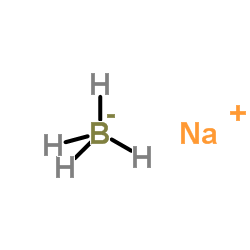
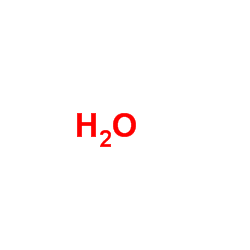


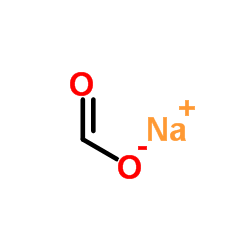
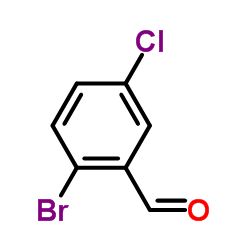 CAS#:174265-12-4
CAS#:174265-12-4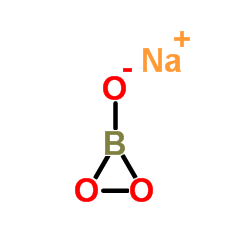 CAS#:7632-04-4
CAS#:7632-04-4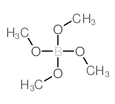 CAS#:18024-69-6
CAS#:18024-69-6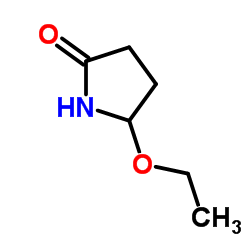 CAS#:39662-63-0
CAS#:39662-63-0